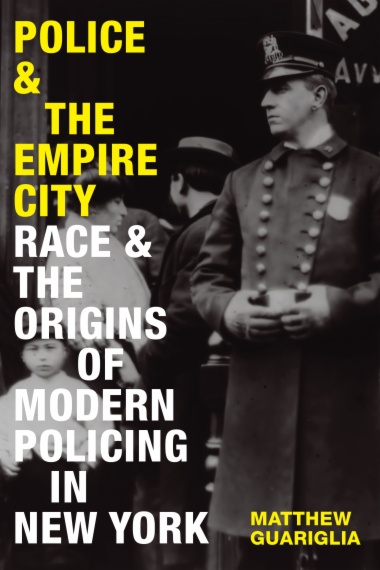During the years between the Civil War and World War II, police in New York City struggled with how to control a diverse metropolis. In Police and the Empire City Matthew Guariglia tells the history of the New York Police Department to show how its origins were built upon and inseparably entwined with the history of race, ethnicity, and whiteness in the United States. Guariglia explores the New York City Police Department through its periods of experimentation and violence as police experts imported tactics from the US occupation of the Philippines and Cuba, devised modern bureaucratic techniques to better suppress Black communities, and infiltrated supposedly unknowable immigrant neighborhoods. Innovations ranging from recruiting Chinese, Italian, and German police to form “ethnic squads” to the use of deportation and federal immigration restrictions to control local crime—even the introduction of fingerprinting—were motivated by attempts to govern a multiracial city. Campaigns to remake the police department created an urban landscape where power, gender, sexuality, race, ethnicity, crime, and bodies collided and provided a foundation for the supposedly color-blind, technocratic, federally backed, and surveillance-based policing of today.
- Cover
- Contents
- Introduction: Race, Legibility & Policing in the Unequal City
- 1. Becoming Blue: New York Police’s Earliest Encounters with Race & Ethnicity, 1845–1871
- 2. Racial Hierarchies of Crime & Policing: Bodies, Morals & Gender in the NYPD, 1890–1897
- 3. Colonial Methods: Francis Vinton Greene’s Journey from Empire to Policing the Empire City
- 4. The Rise of Ethnic Policing: Warren Charles, Cornelius Willemse & the German Squad
- 5. Policing the “Italian Problem”: Criminality, Racial Difference & the NYPD Italian Squad, 1903–1909
- 6. “They Needed Meas Much as I Needed Them”: Black Patrolmen & Resistance to Police Brutality, 1900–1913
- 7. “Police Are Raw Materials”: Training Bodies in the World War I Era
- 8. Global Knowledge / American Police: Information, International Collaboration & the Rise of Technocratic “Color-Blind” Policing
- Conclusion: Policing’s Small Toolbox & the Afterlives of Ethnic Policing
- Acknowledgments
- Notes
- Bibliography
- Index

